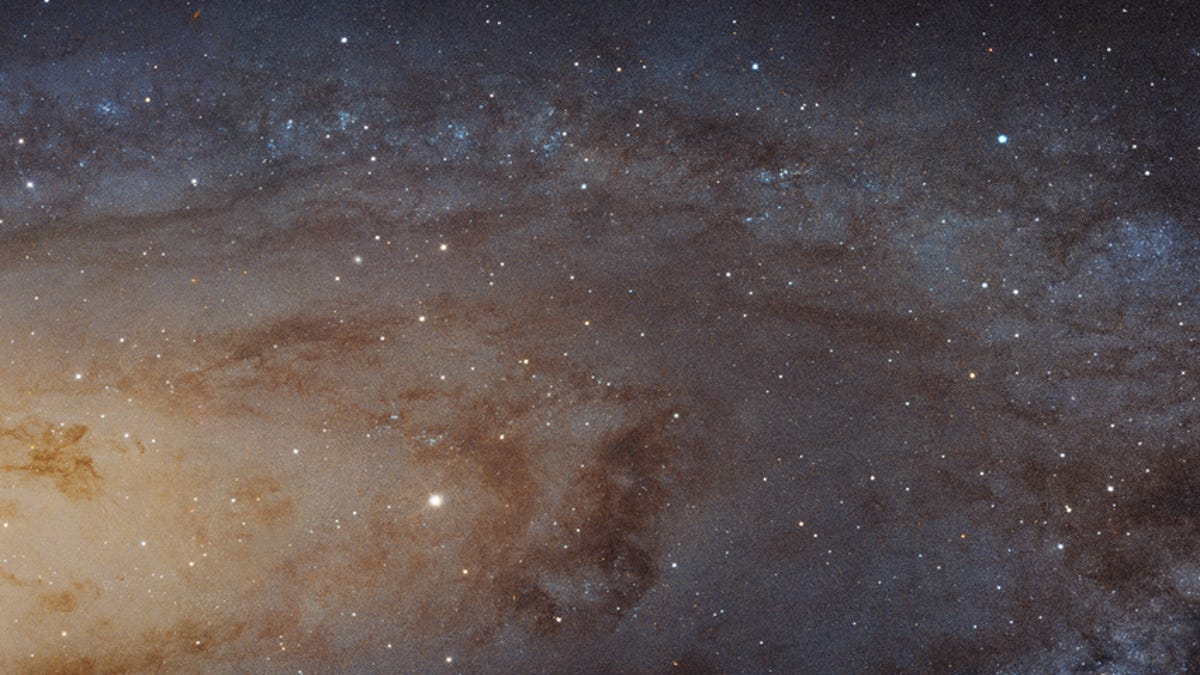Here's What Might Happen If We Finally Decide To Leave Earth Behind
Where we might go and the plans we'd need in place to colonise other planets and galaxies

Click here to see GameSpot & EA's guide to Mass Effect Andromeda
Last year, physicist and cosmologist Stephen Hawking revealed he doesn't believe our planet is likely to survive all the terrible things we're currently doing to it. During a speech at the Oxford Union, he explained: "I don't think we will survive another 1,000 years without escaping beyond our fragile planet."
His prediction sounds scary, but many scientists agree that our days our numbered thanks to global warming and a whole range of other disasters that could easily wipe us out sooner, such as an ever-expanding sun, wandering stars and gamma-ray bursts.
Of course plenty of advancements could step in between now and Doomsday, like figuring out how to reverse the damage done to the Earth's atmosphere or change it somehow with planetary engineering. We could even be partially comprised of robots by then and won't have to pay quite so much attention to what's going on in the physical world.
But one of the more ambitious answers is that we leave our rapidly heating, ruined Earth behind in search of a better life elsewhere.
Thanks to the commercialisation of space travel and interstellar colonisation stories playing a huge part in sci-fi, from Forbidden Planet and Star Trek through to, you guessed it, Interstellar, the idea of a mass exodus to another planet - or indeed another galaxy - isn't that hard to imagine. At least not in in theory. But in practice, things are much more complicated.
Dr. Karen Masters, Reader of Astronomy and Astrophysics at the Institute of Cosmology and Gravitation, University of Portsmouth explained: "Technologically I believe we could live on the Moon, as long as we had regular supplies. Mars would be trickier, because of the radiation."
Mars is kept company by two cratered moons -- an inner moon named Phobos and an outer moon named Deimos.
NASA/JPL-Caltech/GSFC/Univ. of ArizonaBut she tells us it's less about getting the technology right and more about getting the money together for the mission, the supplies and the building materials in the first place. "It's more a matter of funding that any technological show stoppers," Dr. Masters explains. "We saw in the 1960s how quickly missions could be put together with the right political drivers." Which suggests that moving huge droves of us there way in advance for commercial endeavours would be tricky, but if time really was against us to leave, it might be a different story.
Although travelling away from Earth to either the Moon or Mars might be possible, venturing further afield to find a planet a little more like our own might be tricky given the enormous size of the galaxy and technological constraints.
"Going out of the solar system is a completely different story," Dr. Masters said. "Unless we're talking about vast ships on which people expect to live out their entire lives. Again I think we *could* build one of those, but it would be very expensive, and possibly not much fun to live on."
Dr. Masters tells us that the idea of venturing even further afield to find more Earth-like planets is exciting, but probably isn't feasible unless we take space travel cues from our favourite movies and start creating them soon.
"The distances are just so vast. Even at light speed it would take 100's of thousands of years to get out of the Milky Way," she explained. "It'd only work if you imagine some kind of faster than light travel - this is why sci-fi films need to imagine warp drives. But honestly, I'm not sure this will ever be possible."
Even if we manage to leave the solar system, build a warp drive and get all the resources together, it's unlikely to be plain sailing. Astrobiologists predict that within the Milky Way there are could be at least 1 hospitable world for every 10,000 stars, which gives us a lot of options for a new home. But that doesn't mean we can land and start getting on with building a shiny new planet. Chances are that our terraforming tech will need to advance just as much as our warp drives in order to get a new planet ready for humans to live on it in any way that resembles life currently on Earth.
But maybe we don't need a new planet at all. If we manage to build huge, interstellar spacecraft that could take us into space for long periods of time, these vessels could become self-sufficient. So instead of finding a new home we could just build one instead. NASA has written about the possibility of building colonies of 10,000 people or more, which would avoid all the problems of finding a new planet or transporting building materials - although it'd be one hell of a construction job.
Space Colony concept
NASASo unless we discover how to create a warp drive, it might make the most sense to make peace with the idea of a Moon colony, a new life on Mars or even build our own habitat from scratch.
Space colony illustration
NASA Artwork by Don DavisTo explore the Andromeda Galaxy as told by EA's Mass Effect Andromeda, click here
Photos by NASA